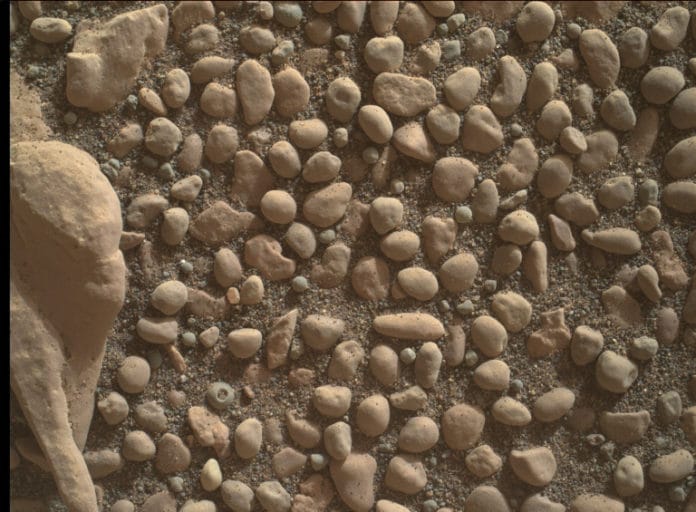NASA’s Mars rover Curiosity has recently captured a bed of pebbles that look like they could be sitting along a riverbed right here on Earth. For this, the spacecraft has used its Mars Hand Lens Imager (MAHLI) that is located on the turret at the end of the rover’s robotic arm.
The image was captured on March 24, 2019, during the Sol 2356 of the Mars Science Laboratory Mission, at 01:35:55 UTC.
While some of the rocks look like they could have been culled from a stream bed, some of the smaller and grayer pebbles look like wonderfully round peas. The pebbles are reminiscent of rocks previously seen on the Red Planet that resemble blueberries or miniature cannonballs.
Reported in BGR, these blueberries are sometimes called are the result of a natural phenomenon called concretion. They occur when minerals begin to gather in water-soaked rocks, eventually hardening. When the softer outer portion of the rock erodes due to wind or other natural processes, the harder spheres inside break free and erode at a much slower rate.
